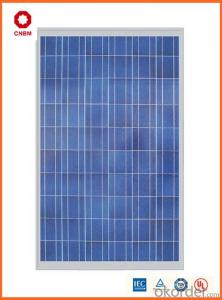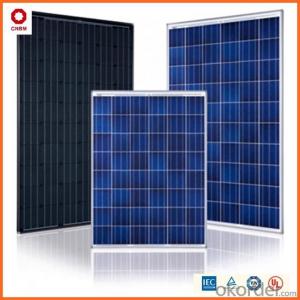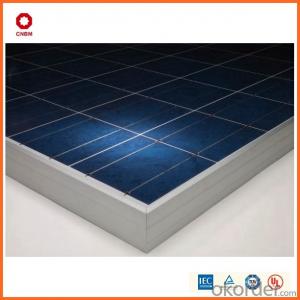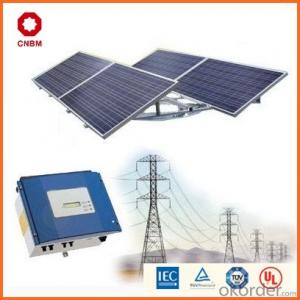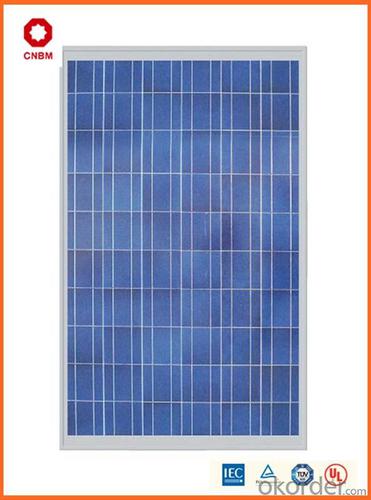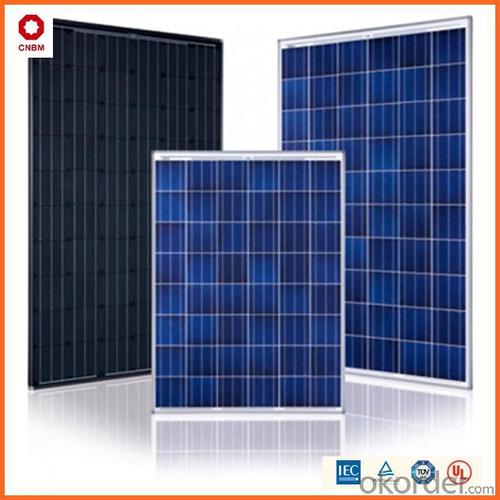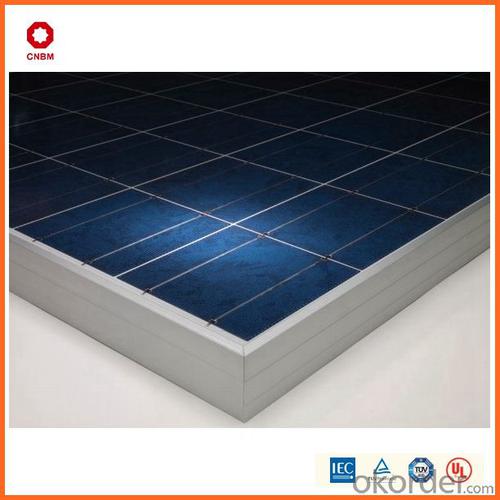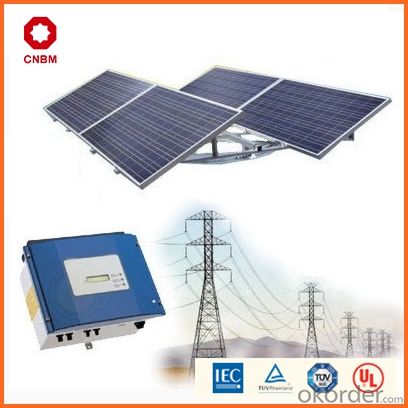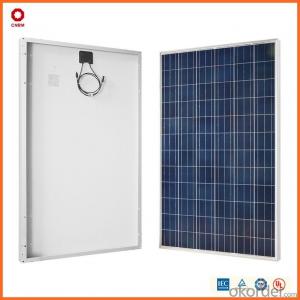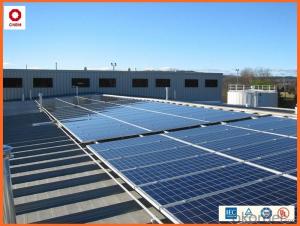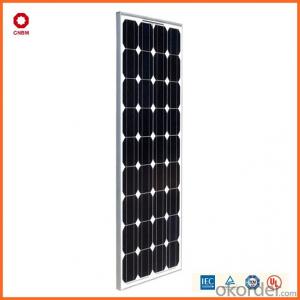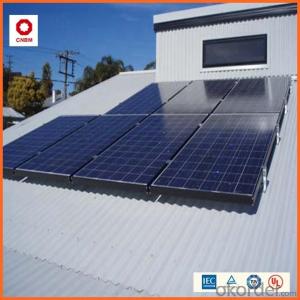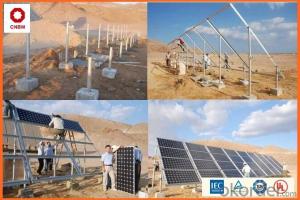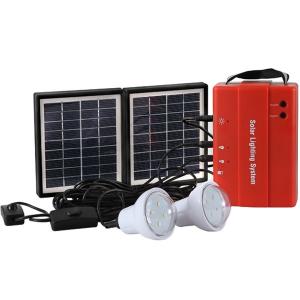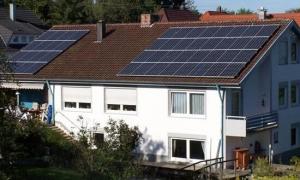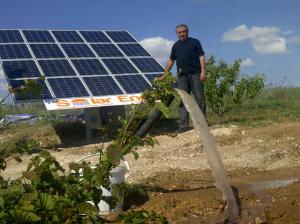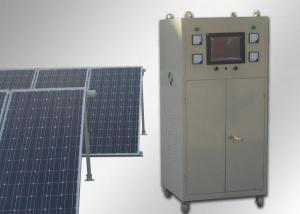5W Small Solar Panels in Stock - Solar Energy Systems Peoria - China Manufacturer
- Loading Port:
- China main port
- Payment Terms:
- TT OR LC
- Min Order Qty:
- 10 watt
- Supply Capability:
- 10000000 watt/month
OKorder Service Pledge
OKorder Financial Service
You Might Also Like
Specification
Product Description:
Hot Sale !!! Quality and Safety of Small Poly Solar Panel 5w~150w
1. Rigorous quality control meets the highest international standards.
2. High-transmissivity low-iron tempered glass, strong aluminium frame.
3. Using UV-resistant silicon.
4. IS09001/14001/CE/TUV/UL
Warranties of Small Poly Solar Panel 35~85w
1. 10 years limited product warranty
2. 15 years at 90% of the minimal rated power output
3. 25 years at 80% of the minimal rated power output
Specification
Characteristics of Poly solar panels CNBM (245-320W) | |||||
Max Power Voltage Vmp(V) | 30.3 | 30.8 | 31.1 | 31.4 | 31.85 |
Max Power Current Imp(A) | 7.60 | 7.64 | 7.73 | 7.81 | 7.85 |
Open Circuit Voltage Voc(V) | 36.1 | 36.6 | 37 | 37.3 | 37.68 |
Short Circuit Current Isc(A) | 8.50 | 8.55 | 8.65 | 8.75 | 8.85 |
Max Power Pm(W) | 230W | 235W | 240W | 245W | 250W |
Temperature Coefficient of Cells Poly solar panels CNBM (245-320W) | |
NOCT | 45± 2 |
Temperature Coeffucients of Isc | 0.0492 |
Temperature Coeffucients of Voc | -0.3374 |
Temperature Coeffucients of Voc | -0.4677 |
Mechanical Data of Poly solar panels CNBM (245-320W) | |
Dimension | 1638 × 982 × 40 mm |
Weight | 19.5 kg |
No. of Cells and Connections | 60 (6 ×10) |
Tolerance | 0 ~ + 5 W |
Cell | Monocrystalline Cell 156 × 156 mm |
Packing | 624 Pcs/40ft(H) Container |
Limits of Poly solar panels CNBM (245-320W) | |
Operating Temperature | -40 to +85 |
Storage Temperature | -40 to +85 |
Max System Voltage | 1000VDC(IEC) / 600VDC(UL) |
Features of our products:
• High conversion efficiency mono/poly-crystalline amorphous silicon solar cells
• Modules incorporate high performance bypass diodes to minimize the power drop caused by shading
• High transmittance, low-iron tempered glass
• High performance EVA encapsulant to prevent destroying and water.
• AI frame: without screw, corner connection. 8 holes on the frame can be installed easily
• Good performance of preventing from atrocious weather such as wind and hails
• Certifications: CE IEC TUV VDE UL, Class I
• 10 years 90% power output warranty
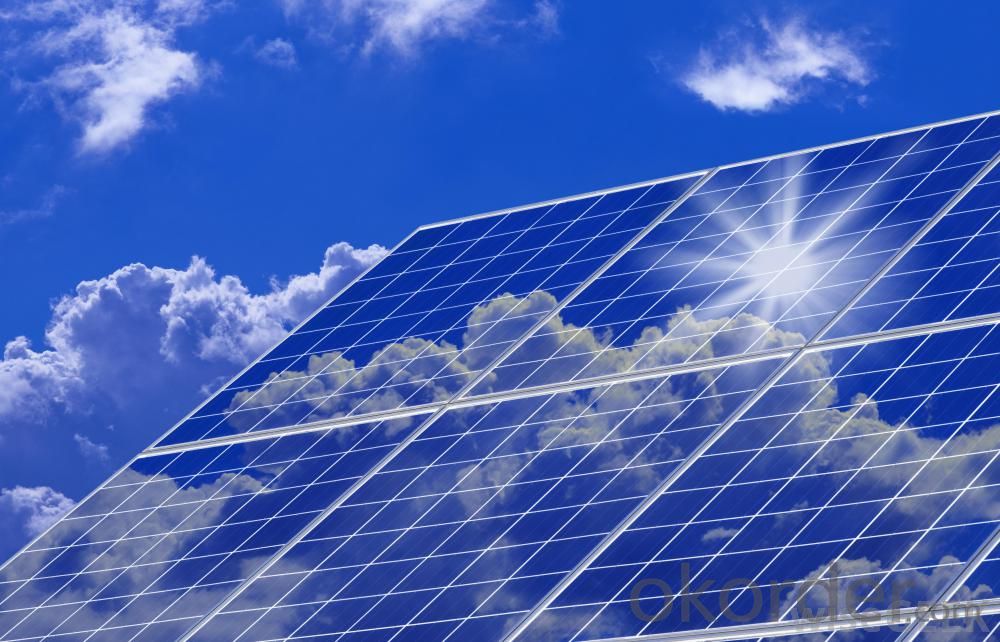
Shipping of Small Poly Solar Panel 35~85w
By Sea | Delivery from Shanghai or Ningbo seaport |
By Air | Departure from Shanghai Pudong Airport |
By Express | Post by DHL, EMS, UPS, TNT. |
Features of our products:
• High conversion efficiency mono/poly-crystalline amorphous silicon solar cells
• Modules incorporate high performance bypass diodes to minimize the power drop caused by shading
• High transmittance, low-iron tempered glass
• High performance EVA encapsulant to prevent destroying and water.
• AI frame: without screw, corner connection. 8 holes on the frame can be installed easily
• Good performance of preventing from atrocious weather such as wind and hails
• Certifications: CE IEC TUV VDE UL, Class I
• 10 years 90% power output warranty
As a professional Solar Panel manufacturer and Supplier in China, we have our customers come around the whole world and our specialization has got a worldwide recognition. Meanwhile, with our superior quality, competitive price, prompt and excellent service, As main role in trade section of CNBM Group, CNBM International Corporation supplies products including Monocrystalline Solar Panel, Polycrystalline Solar Panel ( multicrystalline silicon Solar Panel) have received and enjoyed famous reputation in many countries and regions in the world.
- Q: Can a solar energy system be installed in an area with a high bird population?
- Yes, a solar energy system can be installed in an area with a high bird population. However, certain precautions need to be taken to minimize any potential risks or issues. Birds may be attracted to the solar panels, perching on them or building nests. This can potentially lead to bird droppings and debris accumulating on the panels, reducing their efficiency. To mitigate these risks, there are various measures that can be implemented. One option is to install bird deterrents, such as spikes or netting, around the solar panels to discourage birds from landing or nesting on them. These deterrents should be designed in a way that does not obstruct the sunlight needed for the panels to generate electricity. Regular maintenance and cleaning of the solar panels can also help ensure their optimal performance. This includes removing any bird droppings, nests, or other debris that may accumulate over time. By keeping the panels clean, their efficiency can be maintained, and potential damage can be minimized. Additionally, it is important to choose a suitable location for the solar energy system installation. Placing the panels away from trees or structures that may attract birds for nesting purposes can help reduce the likelihood of bird-related issues. Overall, with proper planning, installation, and maintenance, a solar energy system can be successfully implemented in an area with a high bird population while minimizing any potential negative impacts on its functionality.
- Q: How does the age of a solar energy system affect its performance?
- The performance of a solar energy system can be significantly influenced by its age. As time goes on, solar panels may experience a decline in efficiency caused by various factors. A primary factor is the deterioration of the photovoltaic cells themselves, which can occur due to exposure to sunlight, extreme temperatures, and other environmental factors. Consequently, this degradation can lead to a decrease in the overall power output of the system. Moreover, the components of the solar system, such as inverters and wiring, may also be subject to wear and tear over time. Inverters have the responsibility of converting the direct current (DC) produced by the solar panels into usable alternating current (AC) electricity. With age, inverters may become less efficient or even fail, thereby impacting the system's performance. Another aspect impacted by the age of a solar energy system is the technology itself. Solar technology is constantly advancing, and newer systems tend to be more efficient and capable of producing higher power outputs compared to older systems. Consequently, older solar energy systems may not be able to match the performance of newer, more advanced systems. To address performance issues related to the age of a solar energy system, regular maintenance and inspections are crucial. Activities such as cleaning the panels to remove dirt and debris, checking for loose connections, and ensuring proper alignment can all contribute to maintaining optimal performance. In conclusion, the performance of a solar energy system can be influenced by factors such as the degradation of photovoltaic cells, wear and tear on components like inverters, and advancements in solar technology. By undertaking regular maintenance and staying updated with the latest advancements, it is possible to prolong the lifespan and optimize the performance of a solar energy system.
- Q: Can solar energy systems be used in areas with high levels of light pollution?
- Yes, solar energy systems can still be used in areas with high levels of light pollution. While light pollution can reduce the efficiency of solar panels by obstructing direct sunlight, solar energy systems can still generate electricity even in less ideal conditions. It is important to note that the overall performance of the system may be affected, but advancements in solar technology and proper positioning of panels can help mitigate the impact of light pollution on solar energy generation.
- Q: Can solar energy systems be used in areas with limited access to reliable internet connection?
- Yes, solar energy systems can be used in areas with limited access to reliable internet connection. Solar energy systems function independently of internet connectivity as they generate electricity from sunlight using photovoltaic panels. The generated power can be stored in batteries or used directly to power various devices and appliances, regardless of an internet connection.
- Q: What is the role of solar energy systems in promoting sustainability?
- Solar energy systems play a crucial role in promoting sustainability by providing a clean, renewable, and abundant source of energy. Unlike fossil fuels, which emit harmful greenhouse gases and contribute to climate change, solar energy systems generate power without producing any pollution or emissions. This not only helps to mitigate the negative impacts of climate change but also reduces the dependence on finite fossil fuel resources, which are rapidly depleting. Solar energy systems also contribute to sustainability by decentralizing energy production. Traditional energy sources, such as coal-fired power plants, are typically large-scale and located far away from the end-users. This results in significant energy losses during transmission and distribution. In contrast, solar energy systems can be installed on rooftops or in close proximity to where the energy is needed, reducing energy losses and improving overall efficiency. Additionally, solar energy systems enable individuals and communities to become more self-sufficient and less reliant on centralized energy grids. By producing their own electricity, households and businesses can reduce their energy bills and have a more stable and reliable energy supply, especially in remote areas or during power outages. This decentralization also helps to enhance energy security and resilience, as it reduces the vulnerability to disruptions caused by natural disasters, cyber-attacks, or other emergencies. Furthermore, solar energy systems have a long lifespan and require minimal maintenance, resulting in lower operational costs compared to conventional power generation technologies. This makes solar power an economically viable option, particularly over the long term. As the cost of solar panels and related technologies continues to decline, more individuals, businesses, and governments are investing in solar energy systems, driving further adoption and creating a positive feedback loop for sustainability. The role of solar energy systems in promoting sustainability extends beyond the environmental and economic benefits. Solar power can also have social implications by providing access to electricity for communities that are currently underserved or lack reliable energy sources. This can improve the quality of life, support economic development, and enable educational opportunities, especially in developing countries. In summary, solar energy systems play an integral role in promoting sustainability by reducing greenhouse gas emissions, improving energy efficiency, enhancing energy security, and fostering economic development. By harnessing the power of the sun, we can create a more sustainable future for generations to come.
- Q: Can solar energy systems be used for powering off-grid water treatment plants?
- Yes, solar energy systems can be used for powering off-grid water treatment plants. Solar panels can be used to generate electricity, which can then be used to power the water treatment processes such as filtration, disinfection, and pumping. This allows off-grid water treatment plants to operate independently without relying on traditional power sources, making solar energy a sustainable and efficient option for powering these facilities.
- Q: Can solar energy systems be used in powering green hotels or eco-resorts?
- Yes, solar energy systems can definitely be used in powering green hotels or eco-resorts. Solar power is a clean and renewable source of energy that can greatly contribute to reducing the carbon footprint of these establishments. By installing solar panels on the roofs or open spaces of hotels and resorts, they can generate electricity from the sun's rays and use it to power their operations. Solar energy systems can provide a significant portion, if not all, of the electricity needed to run a green hotel or eco-resort. This includes powering lighting systems, heating and cooling systems, water pumps, and other electrical appliances. The excess energy generated during the day can also be stored in batteries or fed back into the grid to be used during nighttime or low sunlight periods. Implementing solar power in these establishments not only helps reduce their dependence on fossil fuels but also makes them more self-sufficient and resilient to power outages. It aligns with their commitment to sustainability and eco-conscious practices, attracting environmentally conscious travelers who prioritize staying in green accommodations. Furthermore, solar energy systems can also enhance the overall guest experience at these hotels and resorts. They can provide opportunities for educational tours and demonstrations where guests can learn about the benefits of solar power and the importance of renewable energy sources. This can create awareness and inspire guests to adopt sustainable practices in their own lives. In conclusion, solar energy systems are an excellent choice for powering green hotels or eco-resorts. They offer a clean, renewable, and reliable source of electricity that aligns with their sustainability goals. By harnessing the power of the sun, these establishments can reduce their carbon footprint, enhance their guest experience, and contribute to a more sustainable future.
- Q: Can solar energy systems be used for powering off-grid eco-commercial complexes?
- Yes, solar energy systems can definitely be used for powering off-grid eco-commercial complexes. Solar panels can be installed on the rooftops or open spaces of these complexes to generate clean and renewable energy. This energy can then be stored in batteries for use during non-sunlight hours. By utilizing solar power, off-grid eco-commercial complexes can reduce their reliance on fossil fuels, decrease their carbon footprint, and promote sustainable practices.
- Q: Can solar energy systems be used for powering off-grid eco-cities?
- Yes, solar energy systems can be used for powering off-grid eco-cities. Solar panels can be installed in these eco-cities to harness the sun's energy and convert it into electricity. This renewable energy source can then be used to power various needs within the city, such as lighting, heating, and even charging electric vehicles. By relying on solar energy, off-grid eco-cities can reduce their carbon footprint and promote sustainable living.
- Q: Can solar energy systems be used to power electric vehicles?
- Yes, solar energy systems can be used to power electric vehicles. Solar panels can be installed on the roof of a vehicle or in a stationary location to capture sunlight and convert it into electricity. This electricity can then be used to charge the batteries of electric vehicles, providing a clean and renewable source of energy for transportation.
Send your message to us
5W Small Solar Panels in Stock - Solar Energy Systems Peoria - China Manufacturer
- Loading Port:
- China main port
- Payment Terms:
- TT OR LC
- Min Order Qty:
- 10 watt
- Supply Capability:
- 10000000 watt/month
OKorder Service Pledge
OKorder Financial Service
Similar products
Hot products
Hot Searches
Related keywords
